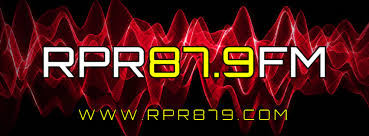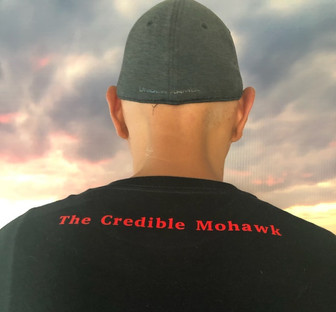Unceded Terms
- The Credible Mohawk

- Jul 7, 2020
- 5 min read
Unceded Lands
Lands that Indigenous Peoples never ceded/surrendered or legally signed away to the Crown or to Canada.
Turtle Island
The name the Haudenosaunee, Anishinaabe, and other Woodland Nations gave to North America. The name comes from a story about Sky Woman. Many Indigenous people, Indigenous rights activists, and environmental activists now use the term for North America.
Ninety-five percent of British Columbia, including Vancouver, is on unceded traditional First Nations territory. Unceded means that First Nations people never ceded or legally signed away their lands to the Crown or to Canada. A traditional territory is the geographic area identified by a First Nation as the land they and/or their ancestors traditionally occupied and used.
Before beginning an event, meeting, or conference, it is proper protocol to acknowledge the host nation, its people and its land. You may hear someone begin an event by saying something like this:
“Before we begin, I would like to acknowledge that we are meeting today on the traditional territories of the ________________ people (or Nation). We thank them for allowing us to meet and learn together on their territory.”
Aboriginal: an English word that actually means “not original.” In the Indian Act Aboriginal includes the First Nations, Inuit, and Métis peoples of Canada. In many cases the preferred term is Indigenous.
Colonization: occurs when a new group of people migrates into a territory and then takes over and begins to control the Indigenous group. The settlers impose their own cultural values, religions, and laws, seizing land and controlling access to resources and trade. As a result, the Indigenous people become dependent on the settlers.
Comprehensive Land Claims: the Government of Canada’s term for modern treaties.
cultural appropriation: the adoption or use of culturally significant items by someone from another culture. Usually, during this process the original meaning is lost or distorted.
Douglas Treaties: 14 land purchase completed between 1850 and 1854 by James Douglas, governor of the British colony of Vancouver Island. They applied to territories on Vancouver Island and covered small tracts of land around Victoria, Nanaimo, and Port Hardy.
Eskimo/Esquimaux: a settler term historically used to refer to Inuit. It is neither accurate nor respectful according to non-Inuit.
First Nations: the accepted term for people who are Indigenous and who do not identify as Inuit or Métis. Today there are around 630 First Nations in Canada.
Historic treaties: treaties signed by First Nations and the British and Canadian governments between 1701 and 1923.
On September 30, 2020 I took the Ohahase Education Centre to Ottawa on Orange Shirt Day; a day when we honour the Indigenous children who were sent away to residential schools in Canada and learn more about the history of those schools. There they had the chance to see this exhibit
Indian: refers to the legal identity of a First Nations person who is registered under the Indian Act. It should be used only within this legal context, and is otherwise considered an offensive term.
Indian Act: legislation passed by the federal government of the Dominion of Canada in 1876, and still in existence today, giving it jurisdiction or control over “Indians and Lands reserved for Indians.”

Indigenous Peoples: from the Latin indigena, meaning “sprung from the land; native.” Indigenous is being used synonymously with Aboriginal, and in many cases is the preferred term. It includes the First Nations, Inuit, and Métis peoples of Canada.
intergenerational trauma: where the effects of traumatic experiences are passed on to the next generations.
micro-aggressions: a term sometimes used to describe the insults, dismissals, or casual degradations a dominant culture inflicts on a marginalized group of people. Often they are a form of unintended discrimination, but one that has the same effect as wilful discrimination. Usually perpetrators intend no offence and are unaware they are causing harm. Generally, they are well-meaning and consider themselves to be unprejudiced.
A message from the late Arthur Manuel and the Tiny House Warriors to all defenders of sacred mother earth and indigenous sovereignty.
Inuktitut: One of the dialects of the Inuit language spoken in Nunavut.
Inuit (singluar Inuk): an Indigenous group living in the Arctic regions of Canada, Greenland, Alaska, and Russia. Historically they were referred to in Canada as “Eskimos” or “Esquimaux,” but this term is neither accurate nor respectful and should not be used.
Innu: a First Nation in eastern Canada. They are not Inuit.
Métis: a distinct Indigenous group with formal recognition equal to that of the First Nations and Inuit. Their ancestors were French and Scottish men who migrated to Canada in the 17th and 18th centuries to work in the fur trade and who had children with First Nations women and then formed new communities. The families and their descendants were most often referred to as Métis (from the French for “to mix”).
While cleaning fish in his kitchen, Kanenhariyo talks about his understanding of the roles and responsibilities of the Rotiskenrakehete (warriors)
Michif: a language historically spoken by Métis people, mixing words from French, Cree, and Dene.
modern treaties: treaties being negotiated today in B.C. through tri-partite negotiations with three levels of government: the First Nation, the Government of Canada, and the Province of British Columbia. The first modern treaty in B.C. was completed in 1999 with the Nisga’a First Nation. Some First Nations in B.C. do not agree with the treaty process.
non-Status Indian: a person who identifies as Indian but who is not entitled to registration under the Indian Act. Some non-Status Indians may be members of a First Nation.

Numbered Treaties: 11 treaties signed by the First Nations peoples and the reigning monarchs of Canada between 1871 and 1921, providing the settler government with large tracts of land in exchange for promises that varied by treaty.
Peace and Friendship Treaties: treaties signed in the Maritimes between 1725 and 1779 intended to end hostilities and encourage co-operation between the British and Mi’kmaq and Maliseet First Nations.
Status Indian: a person who is recognized by the federal government as being registered under the Indian Act. Status Indians may be entitled to certain programs and services offered by federal agencies and provincial governments.
terra nullius: “nobody’s land” – unexplored landscapes drawn by European map-makers as blank spaces representing empty land waiting to be settled, rather than territories occupied by Indigenous Peoples for thousands of years.
traditional territory: the geographic area identified by a First Nation as the land they and their ancestors traditionally occupied and used.
treaty: a document viewed by settlers and settler governments as transferring and surrendering title and control of Indigenous Peoples’ land to them.
T-shirts available now from M to XXL $20.00 plus Shipping
Order on The Credible Mohawk Facebook Page, by email at decolonize@thecrediblemohawk.com or head over and pick one up @ The Pot Shoppe
















Comments